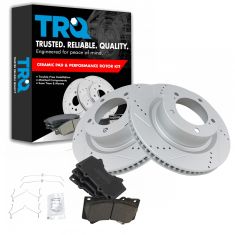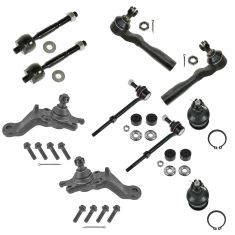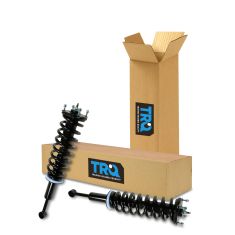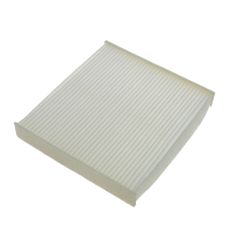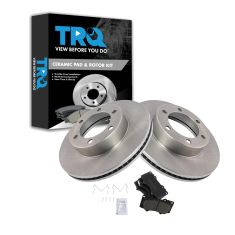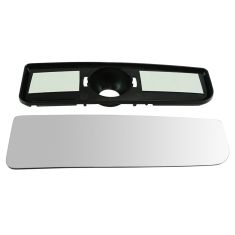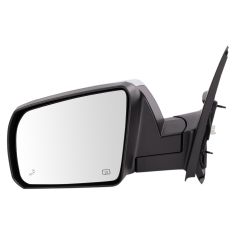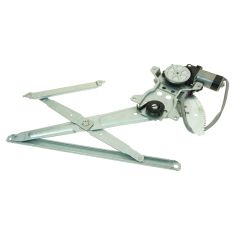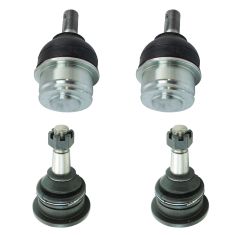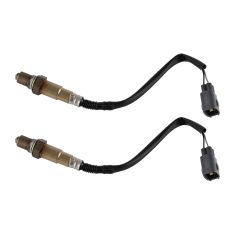Toyota Tundra
-
Notify When Available
Replaces Toyota Lexus Front Ceramic Premium G-Coated Performance Brake Pad & Rotor Kit TRQ Performance BKA12520
Brand: TRQ Performance - BKA12520$254.95Save 7%List $272.95 Save $18.00 -
Notify When Available
Replaces 2003 Toyota Sequoia Tundra Front 10 Piece Steering & Suspension Kit TRQ PSA59452
Brand: TRQ - PSA59452$144.95Save 22%List $184.95 Save $40.00 -
Notify When Available
Replaces Toyota Tundra Front Driver & Passenger Side 2 Piece Strut & Spring Assembly Set TRQ SCA57062
Brand: TRQ - SCA57062$224.95Save 27%List $307.95 Save $83.00 -
Notify When Available$23.95Save 33%List $35.95 Save $12.00
-
Notify When Available
Replaces Toyota Sequoia Tundra Front Ceramic Brake Pad & Rotor Kit TRQ BKA11225
Brand: TRQ - BKA11225$159.95Save 14%List $186.95 Save $27.00 -
Notify When Available
Replaces 2007-16 Toyota Tundra Passenger Side Lower Convex Towing Mirror Glass For Factory Equipped Mirrors Only Trail Ridge TR00567
Brand: Trail Ridge - TR00567$39.95Save 25%List $52.95 Save $13.00 -
Notify When Available
Replaces 2014-21 Toyota Tundra Limited Driver Side Power Heated Mirror TRQ MRA08273
Brand: TRQ - MRA08273$124.95Save 16%List $148.95 Save $24.00 -
Notify When Available
Replaces Toyota Tundra Front Passenger Side Power Power Window Motor & Regulator Assembly TRQ WRA51746
Brand: TRQ - WRA51746$66.95Save 23%List $86.95 Save $20.00 -
Notify When Available
Replaces Toyota Sequoia Tundra Front Driver & Passenger Side 4 Piece Ball Joint Set TRQ PSA66896
Brand: TRQ - PSA66896$64.95Save 24%List $84.95 Save $20.00 -
Notify When Available$71.95Save 17%List $86.95 Save $15.00
The First Generation
The Toyota Tundra was released in 1999 for the 2000 model year. It was unprecedented, largely because there were no Japanese full-size trucks capable of competing with Ford's, GM's, or Chrysler's in the North American market. Toyota labeled it as a full-size pickup despite the fact that it fell a little short in width and height compared to the Big Three's models. This did not hinder the Tundra's success as it went on to win the North American Truck of the Year award for the 2000 model year. The 3.4-liter V6 engine capable of 190 horsepower, and the optional 4.7-liter V8 engine with 245 horsepower probably had something to do with it, along with an extended cab that could seat three on the rear bench seat, rear-wheel drive with a four-wheel drive option, mid and high-level SR5 and Limited trims, decent handling, comfortable ride, and spacious cabin. The optional anti-lock brakes became standard on 2003 models, along with an optional side-step on the cargo bed. Toyota increased the cabin size with a four-door cab for the 2004 model year, and a year later the 2005 model offered an all-new 4.0-liter V6 with 245 horsepower, while the V8 increased in horsepower to 282.
Tundra Today
The current and second generation debuted with the 2007 model. It grew in length, width, and height, and had a restyled fascia for a tougher look. A new 5.7-liter V8 engine debuted with 381 horsepower. The Tundra has offered plenty of variations like the Darrel Waltrip edition, TRD Sport package, TRD Rock Warrior, Platinum Package, and Ivan Stewart Series, among others. Despite the minor changes to the model itself, there have always been upgrades available through special editions. For the 2014 model year, the Tundra got a redesign with a bulkier fascia that held a larger grille laced in chrome, along with new tail lights and tail gate. The newly designed Tundra offered the 4.6-liter V8 with 310 horsepower and the 5.7-liter V8 with 381 horsepower while the 4.0-liter V6 increased in power to 270 horsepower. Rumors swirling in anticipation of the 2016 model have it that a fourth engine option will appear in the form of a 5.0-liter turbo-diesel V8 speculated to have an output around 300 horsepower. Other than the Nissan Titan and the Tacoma, the Tundra remains as one of the few import manufacturer trucks still prevalent in the North American market, and for good reason.
